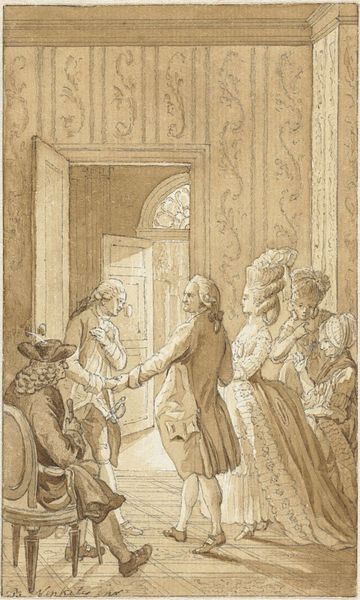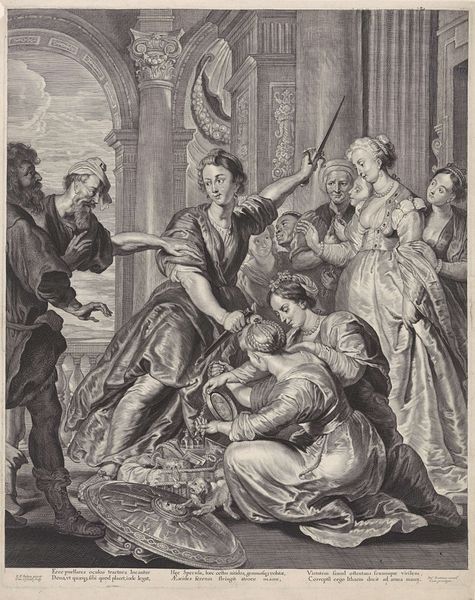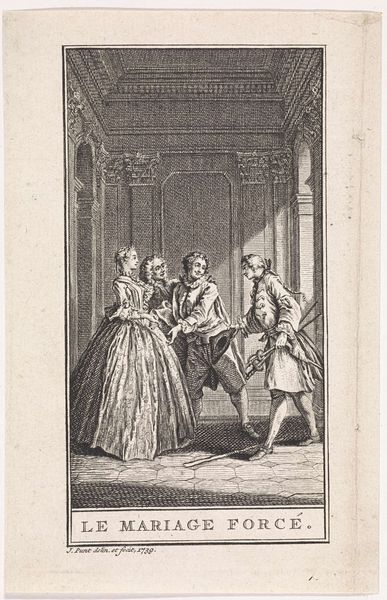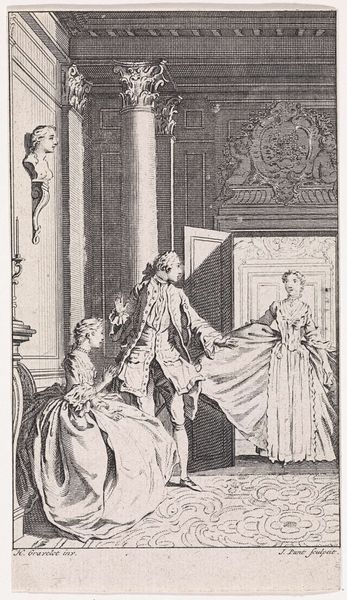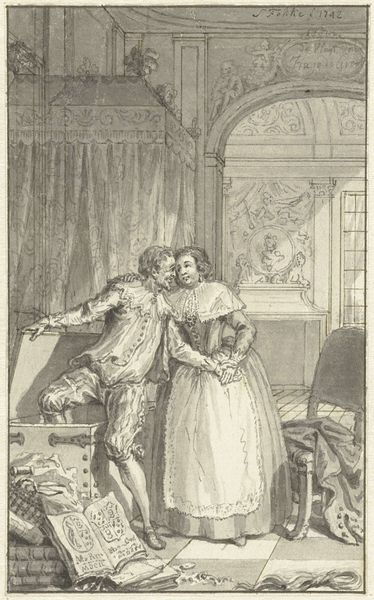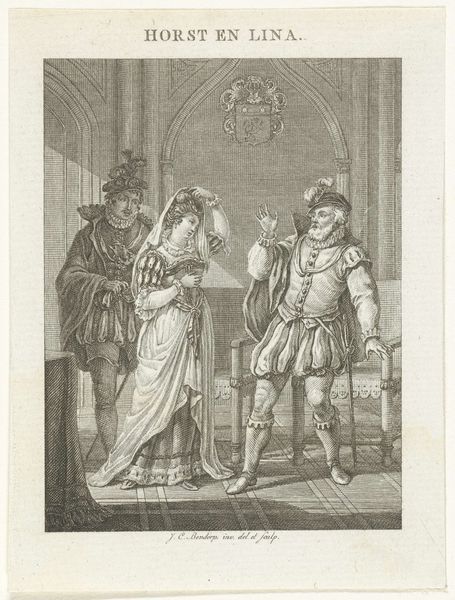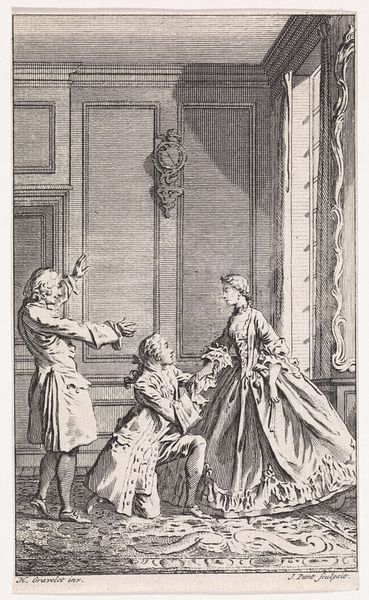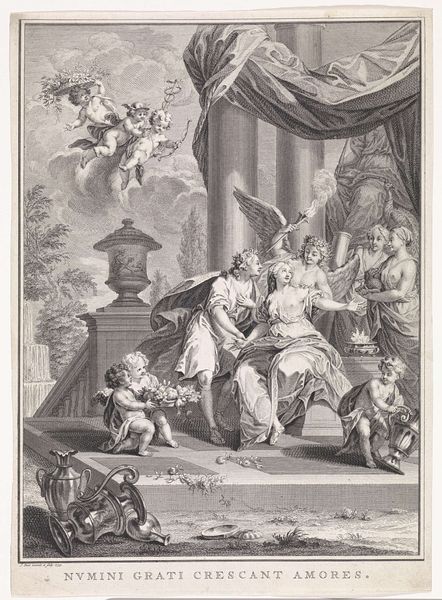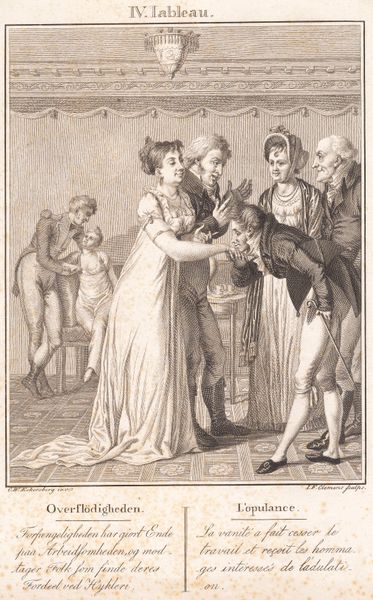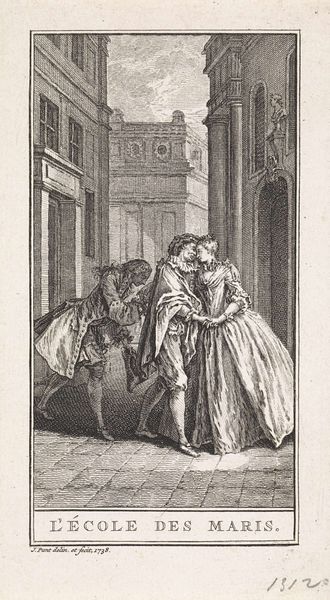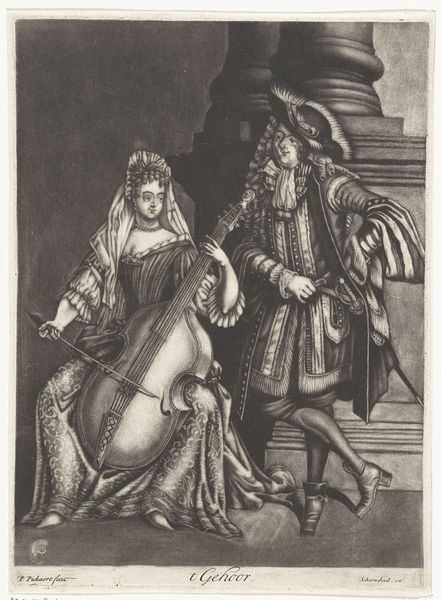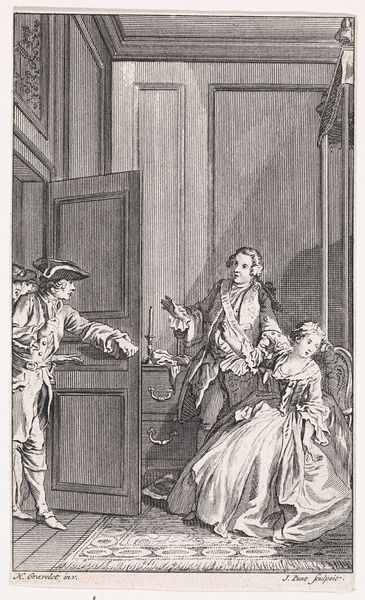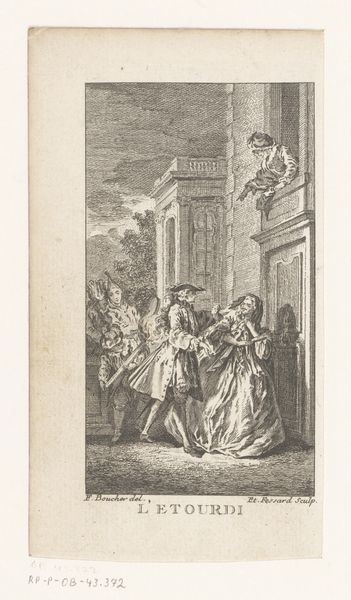
De omkopingsscène uit het tweede bedrijf van het blijspel 'Hopman Ulrich of de bedrogen gierigheid' van Johan van Paffenrode (1661). 1745
0:00
0:00
painting, oil-paint
#
narrative-art
#
painting
#
oil-paint
#
figuration
#
oil painting
#
genre-painting
#
history-painting
#
rococo
Dimensions: height 62 cm, width 50 cm
Copyright: Rijks Museum: Open Domain
Cornelis Troost captured this scene with pastel around 1750, depicting a moment from Johan van Paffenrode's play, "Hopman Ulrich." Notice the sword—a potent symbol. Here, it's not wielded for noble combat but held in the midst of a shady deal. Its presence hints at a threat, a subtle coercion underlying the exchange between these figures. The sword has long appeared in art across centuries, from ancient Roman depictions of military authority to Renaissance allegories of justice. Yet, its meaning here is twisted, perverted for deceit. Consider the figure holding the candle. The candlelight casts dramatic shadows, and the shadows themselves suggest hidden intentions. Like moths to a flame, the symbolic power of light has been used to represent truth and divinity. Here, the light illuminates a scene of deception. These symbols remind us that nothing is ever truly new. The stage is forever being reset, with old stories played out in new costumes. The human drama, with all its follies and vices, continues in endless cycles.
Comments
No comments
Be the first to comment and join the conversation on the ultimate creative platform.
